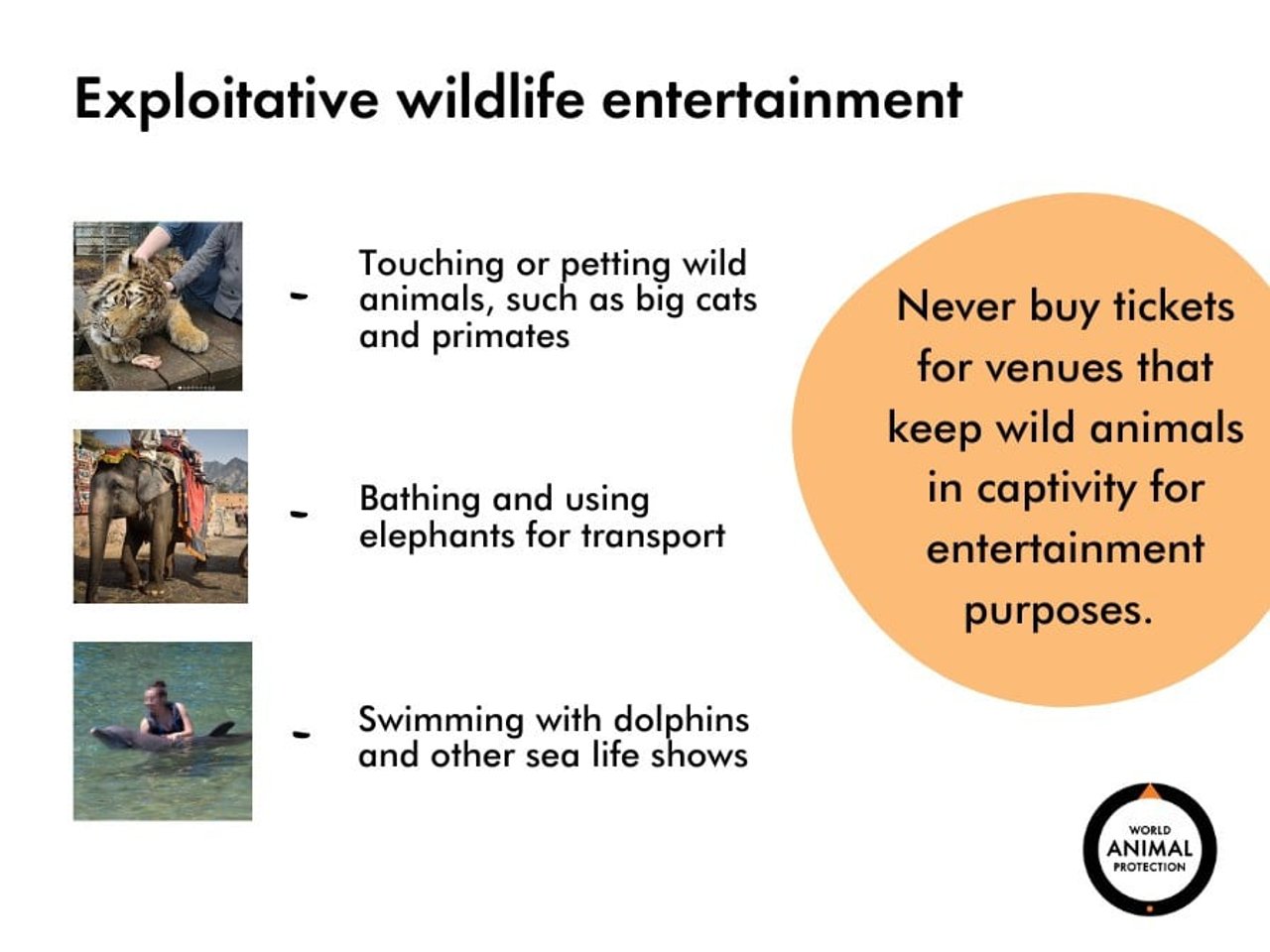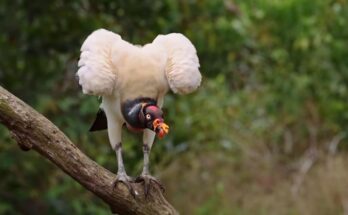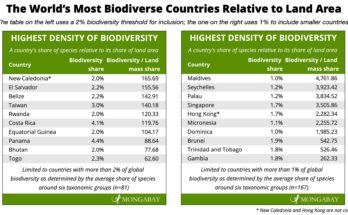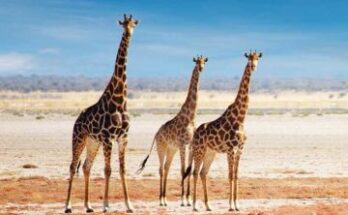Protecting wildlife is vital for maintaining our planet’s health. But what are the best ways to do it?
Wildlife protection involves many strategies. From preserving natural habitats to enforcing strict laws, each action counts. Educating communities also plays a key role. Awareness can lead to better practices and respect for wildlife. Moreover, reducing pollution helps create safer environments for animals.
Simple everyday actions, like recycling, can make a big difference. As our world faces environmental challenges, finding effective ways to protect wildlife becomes essential. This blog will explore the most effective methods to safeguard our planet’s precious creatures. You’ll discover practical tips and insights that can help make a positive impact on wildlife conservation. Let’s dive in and learn how we can all contribute to this important cause.
Habitat Conservation
Conserving wildlife is crucial for maintaining biodiversity. One of the best ways to protect wildlife is through Habitat Conservation. This involves safeguarding natural habitats and restoring damaged ecosystems. By focusing on these areas, we can ensure that wildlife has a safe place to live and thrive.
Protecting Natural Habitats
Natural habitats are the homes of various species. Protecting these areas is essential for wildlife survival. Here are some key strategies:
- Establishing protected areas: National parks and reserves provide safe spaces for wildlife.
- Preventing habitat destruction: Reducing deforestation and urbanization helps preserve natural environments.
- Promoting sustainable land use: Encouraging practices that do not harm habitats.
| Strategy | Benefits |
|---|---|
| Establishing protected areas | Provides safe spaces for wildlife. |
| Preventing habitat destruction | Preserves natural environments. |
| Promoting sustainable land use | Ensures long-term habitat health. |
Restoring Damaged Ecosystems
Many ecosystems have been damaged by human activities. Restoring these areas can help wildlife recover. Key actions include:
- Reforestation: Planting trees to restore forests.
- Wetland restoration: Recreating wetlands to support diverse species.
- Combating pollution: Reducing pollutants that harm habitats.
Restoring ecosystems benefits both wildlife and humans. Healthy ecosystems provide clean water, air, and support biodiversity. Taking steps to restore habitats is vital for a sustainable future.

Legal Protection
Legal protection plays a critical role in safeguarding wildlife. It ensures that animals and their habitats are preserved for future generations. By implementing and enforcing laws, we can help reduce poaching, habitat destruction, and other threats to wildlife.
Enforcing Wildlife Laws
Enforcing wildlife laws is essential for the protection of endangered species. Effective enforcement requires well-trained officers and proper resources. Without strong enforcement, laws are meaningless.
Here are key aspects of enforcing wildlife laws:
- Training for Wildlife Officers: Proper training helps officers identify and handle wildlife crimes.
- Funding for Enforcement Agencies: Adequate funds ensure that agencies can operate effectively.
- Public Awareness Campaigns: Educating the public about laws helps reduce wildlife crimes.
Establishing Protected Areas
Protected areas are crucial for wildlife conservation. These zones provide safe habitats where animals can thrive without human interference. Establishing and maintaining these areas requires planning and resources.
Key steps in establishing protected areas include:
- Identifying Critical Habitats: Locate regions that are vital for endangered species.
- Legal Designation: Legally designate these regions as protected areas.
- Management Plans: Develop and implement management plans to maintain the habitats.
Protected areas offer multiple benefits:
| Benefit | Description |
|---|---|
| Biodiversity Conservation | These areas help preserve a variety of species. |
| Research Opportunities | Scientists can study wildlife in their natural habitats. |
| Tourism Revenue | Eco-tourism can generate income for local communities. |
Sustainable Practices
Sustainable practices play a crucial role in protecting wildlife. They help maintain the balance of ecosystems. By promoting eco-friendly methods, we can ensure the survival of various species. This section explores sustainable practices that help protect wildlife.
Promoting Eco-friendly Agriculture
Eco-friendly agriculture reduces harmful impacts on wildlife. It involves using organic farming techniques. Avoiding pesticides and chemicals protects soil and water. Crop rotation and polyculture enhance biodiversity. These practices create a healthier environment for animals. Farmers can also plant trees and shrubs around fields. These areas provide shelter and food for wildlife.
Supporting Sustainable Fisheries
Sustainable fisheries help maintain fish populations. They prevent overfishing and ensure long-term fish availability. Fishermen can use selective fishing gear. This method targets specific species and reduces bycatch. Supporting marine protected areas also helps. These zones allow fish populations to recover and grow. Consumers can make a difference too. Choose seafood from certified sustainable sources.

Community Involvement
Community involvement plays a crucial role in protecting wildlife. Local communities can have a direct impact on conservation efforts. They often live in close proximity to wildlife habitats. By involving them, we can create sustainable solutions.
Educating Local Communities
Education is key to wildlife protection. Teaching locals about the importance of wildlife can foster empathy. Awareness programs can help communities understand the role of animals in the ecosystem. Schools and community centers can host workshops and seminars. Local leaders can also spread the message. Knowledge empowers people to take action.
Engaging In Conservation Projects
Involving communities in conservation projects can make a big difference. Local participation ensures that projects are culturally appropriate and sustainable. Community members can help with habitat restoration and wildlife monitoring. They can also assist in anti-poaching activities. Hands-on involvement helps people feel connected to their environment. It builds a sense of responsibility toward wildlife.
Anti-poaching Efforts
Poaching threatens many species. Wild animals are hunted for their skin, tusks, and other parts. Anti-poaching efforts help save these animals. These efforts include patrolling, using technology, and educating locals. This section explores some effective anti-poaching strategies.
Strengthening Anti-poaching Units
Anti-poaching units are the front line in wildlife protection. These units need proper training and resources. They often face dangerous situations. Training improves their skills in tracking, capturing, and handling poachers. Resources like vehicles, weapons, and protective gear are vital.
Collaboration with local communities also helps. Locals can provide valuable information and support. Creating job opportunities in these communities can reduce the temptation to poach. Strong anti-poaching units can make a significant difference.
Implementing Tracking Technologies
Tracking technologies have become a powerful tool in anti-poaching efforts. GPS collars on animals provide real-time data. This helps in monitoring their movements. If an animal strays into a danger zone, rangers can respond quickly.
Drones and surveillance cameras also play a role. They cover large areas and capture images and videos. These tools can spot poachers before they strike. Combining different technologies increases the chances of success.
| Technology | Usage |
|---|---|
| GPS Collars | Track animal movements |
| Drones | Surveillance and area monitoring |
| Cameras | Capture images and videos |
Using these technologies requires investment. But the benefits are worth it. Protecting wildlife ensures the balance of our ecosystem.
Wildlife Corridors
Wildlife corridors are essential for the survival of many species. They allow animals to move safely between habitats. This helps in finding food, mates, and new homes. Corridors also reduce the risk of inbreeding and support biodiversity.
Creating Safe Passageways
Safe passageways are key to effective wildlife corridors. These pathways connect different habitats and allow safe animal movement. Bridges, tunnels, and green overpasses help animals cross roads and railways. They prevent accidents and reduce roadkill.
Ensuring these passageways are wide and natural-looking encourages animals to use them. Vegetation and natural cover make the corridors more inviting. This increases the chances of animals using these routes.
Reducing Habitat Fragmentation
Habitat fragmentation is a major threat to wildlife. It occurs when large habitats are divided into smaller, isolated patches. This makes it hard for animals to find resources and mates.
Wildlife corridors help combat this issue. They reconnect fragmented habitats and create larger, continuous areas for wildlife. This allows animals to move freely and maintain healthy populations.
Reducing fragmentation also supports entire ecosystems. It ensures that plants, animals, and other organisms can thrive together. This maintains the balance of nature and supports biodiversity.
Responsible Tourism
Responsible tourism is about traveling in ways that respect and benefit wildlife. It ensures that your actions do not harm the environment or the animals you encounter. By being a responsible tourist, you help protect wildlife and their habitats.
Promoting Ethical Wildlife Tourism
Ethical wildlife tourism involves practices that prioritize animal welfare. Choose tour operators that follow strict guidelines for animal interactions. Look for certifications from trusted organizations. Support sanctuaries and reserves that focus on conservation. Avoid attractions that exploit animals for entertainment.
Here are some key practices to follow:
- Avoid riding elephants or other animals.
- Do not feed wildlife. It disrupts their natural diet.
- Respect animal space. Maintain a safe distance.
- Support local conservation efforts. They often rely on tourism revenue.
Minimizing Human Impact
Minimizing human impact helps preserve natural habitats. Stick to designated trails and paths. This prevents damage to sensitive ecosystems. Reduce waste by bringing reusable items. Avoid single-use plastics. Pack out all trash.
Consider these practices to minimize your impact:
- Travel in small groups. Large groups can overwhelm wildlife.
- Use eco-friendly transportation. Walk or bike when possible.
- Stay in eco-lodges. They follow sustainable practices.
- Conserve water and energy. Turn off lights and taps.
By adopting these habits, you help protect wildlife and their habitats. Your responsible actions make a big difference in conservation efforts.

Research And Monitoring
Research and Monitoring are crucial in protecting wildlife. By understanding their behavior, population trends, and habitats, we can develop effective conservation strategies. This involves various methods such as conducting wildlife surveys and tracking population trends.
Conducting Wildlife Surveys
Wildlife surveys help gather information about different species. These surveys can be conducted through direct observation, camera traps, or even drones. By collecting data on species presence, habitat use, and population size, researchers can identify areas that need protection.
Surveys also help in understanding the impact of human activities on wildlife. For example, how deforestation affects animal habitats. This information is crucial for making informed conservation decisions.
Tracking Population Trends
Tracking population trends involves monitoring changes in wildlife numbers over time. This helps in understanding whether a species is thriving or declining. Scientists use various methods for this, such as:
- Mark-recapture techniques: Marking animals and recapturing them to estimate population size.
- Radio telemetry: Using radio collars to track animal movements and behavior.
- Genetic sampling: Analyzing DNA to understand population structure and diversity.
By analyzing these trends, conservationists can identify threats to wildlife and implement strategies to mitigate them. For instance, if a species is declining due to habitat loss, efforts can be made to restore and protect their habitat.
Frequently Asked Questions
How Can I Help Protect Wildlife?
You can help by supporting conservation efforts, reducing waste, and using eco-friendly products. Also, avoid buying products made from endangered animals.
Why Is Wildlife Protection Important?
Wildlife protection maintains biodiversity, supports ecosystems, and ensures a healthy environment. It also preserves natural heritage for future generations.
What Are Effective Ways To Conserve Habitats?
Effective ways include creating protected areas, supporting reforestation projects, and reducing pollution. Also, participate in local conservation programs.
How Does Reducing Plastic Help Wildlife?
Reducing plastic usage prevents pollution, protects marine life, and reduces habitat destruction. Use reusable items to minimize plastic waste.
Conclusion
Protecting wildlife is essential for a balanced ecosystem. Simple actions make a big impact. Support local conservation efforts. Educate others about the importance of wildlife. Reduce plastic use to protect habitats. Plant native species in your garden. Respect nature during outdoor activities.
Volunteer with wildlife organizations. Every effort counts. Each person can make a difference. Start today and help protect our precious wildlife for future generations.



